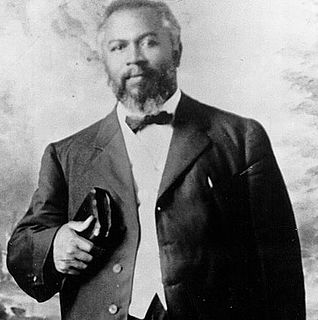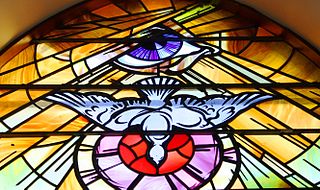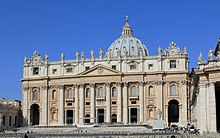
Glossolalia or speaking in tongues is a phenomenon in which people speak in languages unknown to them. One definition used by linguists is the fluid vocalizing of speech-like syllables that lack any readily comprehended meaning, in some cases as part of religious practice in which it is believed to be a divine language unknown to the speaker. “Orawashia dela sende” for example is one of the many variations of words that can exist when a person is experiencing Glossolalia. Glossolalia is practiced in Pentecostal and charismatic Christianity as well as in other religions.
Charismatic Christianity is a form of Christianity that emphasizes the work of the Holy Spirit, spiritual gifts, and modern-day miracles as an everyday part of a believer's life. Practitioners are often called Charismatic Christians or Renewalists. Although there is considerable overlap, Charismatic Christianity is often categorized into three separate groups: Pentecostalism, the Charismatic Movement and Neo-charismatic movement. According to the Pew Research Center, Pentecostals and Charismatic Christians numbered over 584 million or a quarter of the world's 2 billion Christians in 2011.

The Holiness movement involves a set of beliefs and practices which emerged within 19th-century Methodism. A number of Evangelical Christian denominations, parachurch organizations, and movements emphasize those beliefs as central doctrine. The movement is Wesleyan-Arminian in theology, and is defined by its emphasis on John Wesley's doctrine of a second work of grace leading to Christian perfection. As of 2015 Holiness-movement churches had an estimated 12 million adherents.
The term Full Gospel is a term often used to describe the doctrinal teachings of Pentecostalism and Charismatic Christianity, evangelical movements that originated in the 19th century. The movement and its teachings grew out the Wesleyan Arminianism of the post-American Civil War era's holiness movement, especially through the "fourfold" teachings of A. B. Simpson, founder of the Christian and Missionary Alliance.
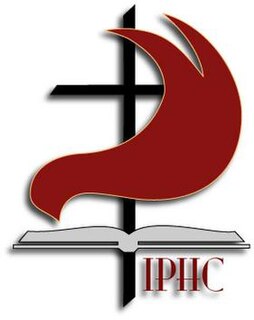
The International Pentecostal Holiness Church (IPHC) or simply Pentecostal Holiness Church (PHC) is a Pentecostal Christian denomination founded in 1911 with the merger of two older denominations. Historically centered in the Southeastern United States, particularly the Carolinas and Georgia, the Pentecostal Holiness Church now has an international presence. In 2000, the church reported a worldwide membership of over one million—over three million including affiliates.
In Christian theology, baptism with the Holy Spirit has been interpreted by different Christian denominations and traditions in a variety of ways due to differences in the doctrines of salvation and ecclesiology. It is frequently associated with incorporation into the Christian Church, the bestowal of spiritual gifts, and empowerment for Christian ministry. Spirit baptism has been variously defined as part of the sacraments of initiation into the church, as being synonymous with regeneration, as being synonymous with Christian perfection, or as being a second work of grace that empowers a person for Christian life and service. The term baptism with the Holy Spirit originates in the New Testament, and all Christian traditions accept it as a theological concept.

Catholic Charismatic Renewal is a spiritual movement within the Catholic Church that incorporates aspects of both Catholic and Charismatic Movement practice. It is influenced by some of the teachings of Protestantism and Pentecostalism with an emphasis on having a personal relationship with Jesus and expressing the gifts of the Holy Spirit.
The Neo-charismaticmovement is a movement within evangelical protestant Christianity. The Neo-charismatic movement is considered to be the "third wave" of the charismatic Christian tradition which began with Pentecostalism, and was furthered by the evangelical charismatic movement. Neo-charismatics are now believed to be more numerous than the first and second wave categories, combined, as a result of the growth of postdenominational and independent charismatic groups. As of 2002, there were estimated to be approximately 295 million adherents or participants in the neo-charismatic movement.
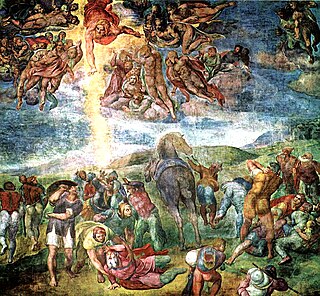
Conversion to Christianity is a process of religious conversion in which a previously non-Christian person converts to Christianity. Converts to Christianity typically make a vow of repentance from past sins, accept Jesus as their Savior and vow to follow his teachings as found in the New Testament.

The Assemblies of God USA (AG), officially the General Council of the Assemblies of God, is a Pentecostal Christian denomination in the United States founded in 1914 during a meeting of Pentecostal ministers at Hot Springs, Arkansas. It is the U.S. branch of the World Assemblies of God Fellowship, the world's largest Pentecostal body. With a constituency of over 3 million, the Assemblies of God was the ninth largest Christian denomination and the second largest Pentecostal denomination in the United States in 2011.

The Finished Work is a doctrine that locates sanctification at the time of conversion, afterward the converted Christian progressively grows in grace. This is contrary to the doctrine of entire sanctification that locates complete sanctification in a definite "second work" of grace which is a necessary prerequisite to receive the baptism in the Holy Spirit. The term finished work arises from the aphorism "It's a Finished Work at Calvary", referring to both salvation and sanctification. Though the term is used within Pentecostal Christianity, it is not exclusively a Pentecostal doctrine.

Protestantism is the second largest form of Christianity with collectively between 800 million and more than 900 million adherents worldwide or nearly 40% of all Christians. It originated with the 16th century Reformation, a movement against what its followers perceived to be errors in the Roman Catholic Church. Protestants reject the Roman Catholic doctrine of papal supremacy and sacraments, but disagree among themselves regarding the real presence of Christ in the Eucharist. They emphasize the priesthood of all believers, justification by faith alone rather than by good works, and the highest authority of the Bible alone in faith and morals. The "five solae" summarise basic theological differences in opposition to the Roman Catholic Church.

According to some Christian traditions, a second work of grace is a transforming interaction with God which may occur in the life of an individual Christian. The defining characteristics of this event are that it is separate from and subsequent to salvation, and that it brings about significant changes in the life of the believer.
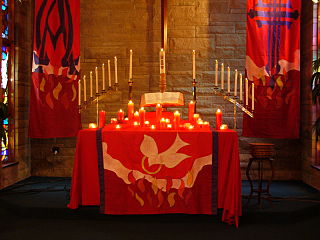
Christian denominations have variations in their teachings regarding the Holy Spirit.
Pentecostalism is a renewal movement within Protestant Christianity that places special emphasis on a direct personal experience of God through the baptism with the Holy Spirit. For Christians, this event commemorates the descent of the Holy Spirit upon the followers of Jesus Christ, as described in the second chapter of the Book of Acts. Pentecostalism was established in Kerala at the start of the 20th century.

Pentecostalism is a renewal movement within Protestant Christianity that places special emphasis on a direct personal experience of God through baptism with the Holy Spirit. It emerged from 19th century precursors between 1870 and 1910, taking denominational form from c. 1927. From the early 1930s, pentecostal denominations multiplied, and there are now several dozen, the largest of which relate to one another through conferences and organizations such as the Australian Pentecostal Ministers Fellowship. The Australian Christian Churches, formerly known as the Australian Assemblies of God, is the oldest and longest lasting Pentecostal organization in Australia. The AOG/ACC is also the largest Pentecostal organization in Australia with over 300,000 members in 2018. Until 2018, Hillsong Church was one of 10 megachurches in Australia associated with the ACC that have at least 2,000 members weekly. According to the church, over 100,000 people attend services each week at the church or one of its 80 affiliated churches located worldwide.

Pentecostalism in Ethiopia is the practice of various Pentecostal forms of Christianity—often included within the evangelical category of P'ent'ay—in Ethiopia, with a constituency of about 5 million members. Ethiopia's former prime minister Hailemariam Desalegn is a member of the Apostolic Church of Ethiopia, a Oneness Pentecostal organization. Despite persecution by the government and the dominant Ethiopian Orthodox Church, Pentecostalism relies on youth and technology to spread its practices throughout the country. Pentecostalism has been found to contribute to the prosperity of people in Ethiopia. The message of Pentecostalism includes prosperity and beliefs around expectations for a better life. After gaining religious freedom in 1991, churches began preaching prosperity and growth outside the government and to discuss fighting corruption. Some Pentecostal worshipers state that the style of worship offers them tangible help for worldy problems. Worship services include the practices speaking in tongues, divine healing, exorcism, prophecy, and powerful prayer.
The Evangelical charismatic movement represents the evangelical churches that have an emphasis on the gifts of the Spirit. Started in the United States in the 1960s, the "second wave" has influenced churches of all Christian denominations and contributed to the creation of many independent evangelical churches. The movement is distinguished from Pentecostalism by not making the speaking in tongues (glossolalia) a necessary evidence of Spirit baptism and giving prominence to the diversity of spiritual gifts. According to figures from Pew Research Center in 2011, the movement identifies 305 million believers.





